Things to do
Roskilde 2022: A fest for the senses through art and culture
This article is more than 3 years old.
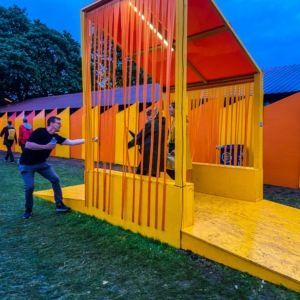
After several years of unprecedented times, befittingly, this year’s Roskilde Festival, the 50th Anniversary of the calendar stalwart, was in and of itself, rather unprecedented too. From the lukewarm (at best) line-up, to a shortage of volunteers, there were always going to be questions asked – and more so at a festival seemingly frequented by people of all age groups keen on relegating the past years’ strife to mere memory.
Enter the role of art, a constant presence at every festival, but perhaps even more important at this one – a Roskilde so exposed to critique, love, affection and the common vulnerabilities that makes us all human.
Would there be a forum to reflect critically on the volatile times in which we live? Would there be space to reflect at all in an era of mass escapism and distraction? Would there be the right sort of sensory immersion at a concert that featured such a mixed line-up, hampered by finance and circumstance?
We looked at some of the marquee art installations at this year’s festival in search of answers to these and so many other questions.
A Graphic Work – and a Heated Debate
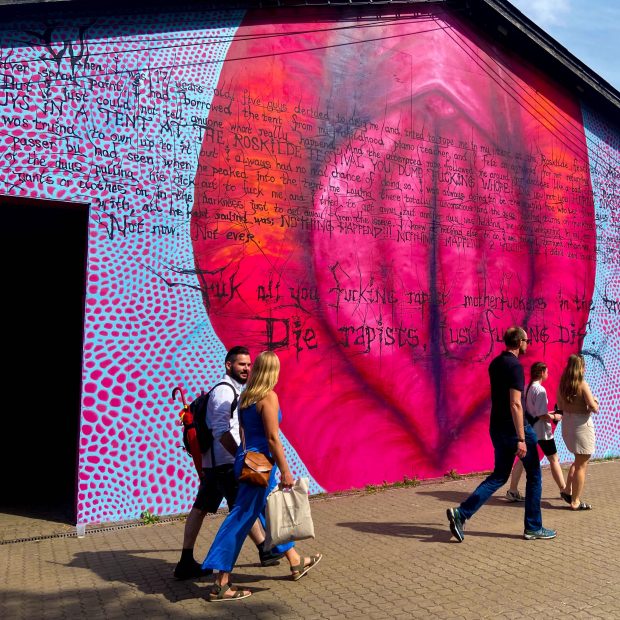
The indoor Gloria scene has been known for its artsy edge over the years, featuring everything from heavily experimental acts no one has ever heard of to ‘accessible’ artists intended to draw in audiences unprepared for the sensory overload that can come with your typical performance in here.
This year, the entrance to Gloria was draped in a mural of a vagina – the gateway to the cavernous uterus of the scene inside. Here, soft, rosy tones and soothing fabrics lent warm thoughts to the creation of life – and indeed life itself. The work, by Swedish artist Carolina Falkholt, was created to ask questions of ableism, mental health and feminine sexuality, among other things and was based on the artist’s own experiences at the festival (she was tragically the victim of an attempted rape at the festival earlier in her life).
Due to the morbid nature of the work, Roskilde Festival – wary of its potentially triggering effect – decided to put a curtain over it. This didn’t go down well with Danish politician, Rosa Lund, who was filmed tearing down the curtain and later criticised the fact that it had been set up, branding it “disrespectful to both the artist and other victims who needed to have their voices heard”.
Intentional or not, the work created a conversation about a subject matter that isn’t easy to speak about – and that is all the more important to address in today’s society.
Dreams in Technicolour / Ambereum
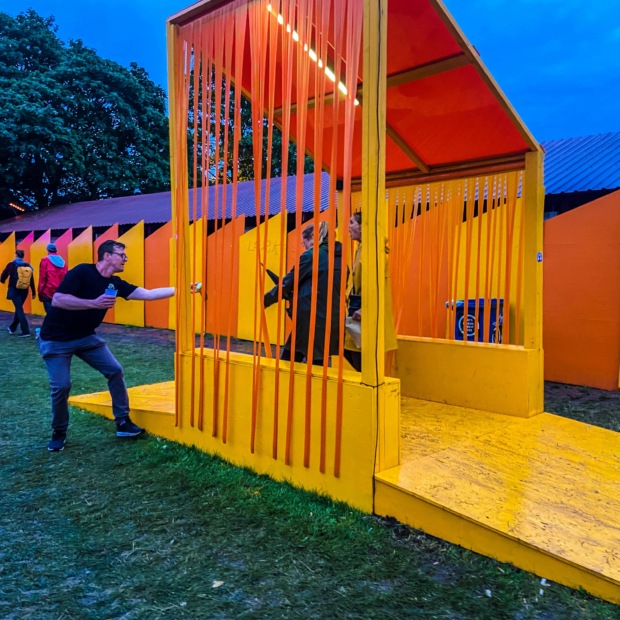
Ambereum was the incarnation of a scene from the future – a place and state in time and space in constant liminality (change.) By day, this orange/Papaya coloured hodgepodge of wooden installations loftily draped with flimsy paper and plastic strips offered a meditative reprieve from the elements – and it was conveniently located in between dining areas and some of the bigger festival stages.
Come the late afternoon, however, Ambereum morphed into a full-blown intimate party, with a packed dancefloor vibe not indifferent to what you’d expect of a night out in Vesterbro’s Meatpacking District.
As DJs – playing the sorts of tunes you won’t find on streaming services – spirited unsuspecting audiences away to far-flung music cultures only recognizable by an omnipresent staccato drumbeat, the meditative feel was still very much alive.
The Ugandan dance label and creative agency Nyege Nyege was a highlight, leading a 5-hour rave on Friday afternoon. With the rain lashing down, it gathered revelers from far and wide in one warm existentialist embrace.
Platform – at the apex of art and music
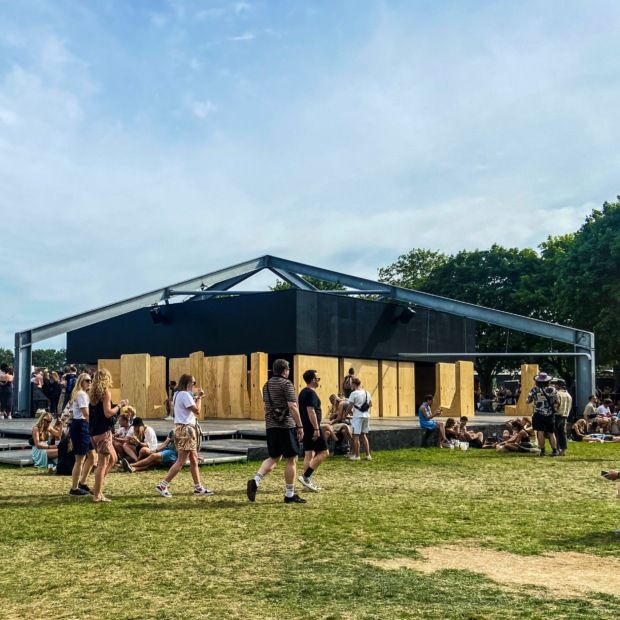
‘Platform’ was an all-new venue and situational art piece located between the stages of Orange and Arena. The music lineup here, like the format itself, was hybrid, intense and heavy on the senses – an architectural fusion that blurred the boundary between artist and audience.
The dark room work of Tino Sehgal, a German performance artist, was more akin to a museum visit than your average Roskilde Festival experience. Running from Wednesday through to Saturday, this space offered the perfect reprieve and dare we say it, restart, from the challenges of life in 2022.
The usual s̶u̶s̶p̶e̶c̶t̶s̶ murals
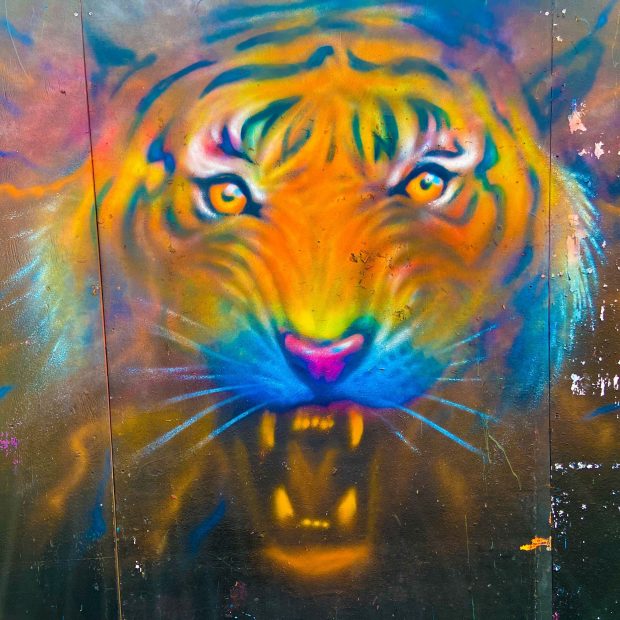
While not necessarily promoted to the same extent (or with the same intent) as the ‘marquee’ works on the programme, Roskilde’s graffiti murals have always been a fantastic forum for creative expression – void of genre and the usually overthought classifications of what their works are or are not. If anything, this year, these kaleidoscopic works were all the more poignant, with expressions from the likes of Oeps Crew, Stine Hvid and the legendary Moa collective (paint still dripping) decorating the festival narrative with aplomb.
We got by, now what?
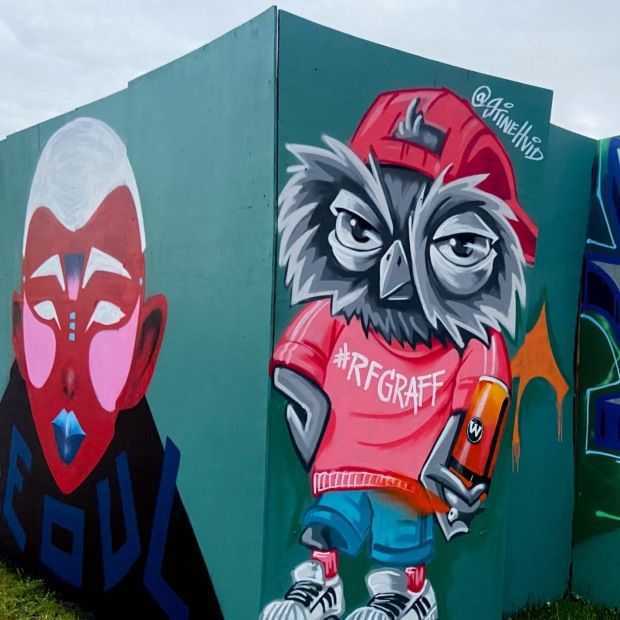
After a week of “music, art, activism, camping and freedom,” (in Roskilde’s parlance, per their headline,) the 50-year-old fixture, bruised from its recent history did what was expected of it. The jubilee celebrations were at a minimum – and perhaps so too were the expectations.
This was a festival to rekindle life as we knew it, as best we can, all considered – and the art programme reflected this. There have ultimately been art scenes in the past that were bigger, bolder, brighter. There have certainly been works that have evoked a broader and more nuanced sense of self-reflection. And there have been features of festivals past that have asked more critical questions of the society in which we live in.
But, perhaps this time around, like many other things about this year’s festival, we should be grateful for the mere fact that the festival took place and that there was an opportunity for us all to gather and partake in several days of co-creation, art and culture.










































